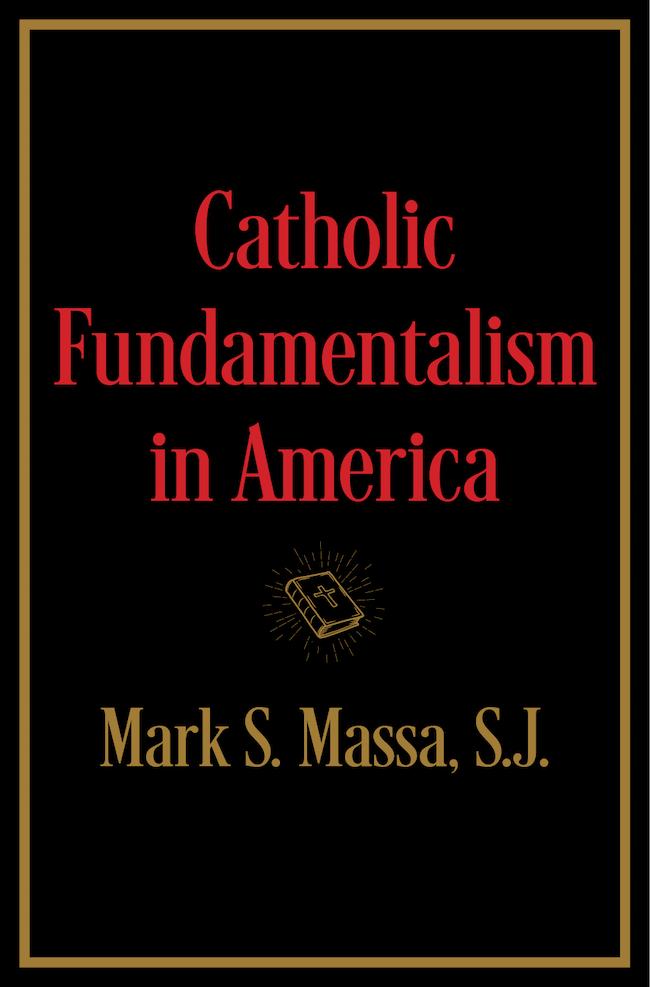The rise of Catholic Fundamentalism in America
After World War II, many aspects of American life underwent dramatic changes—including the Catholic Church. The rise of pluralism, the growing affluence of Catholics, and the Second Vatican Council all contributed to a transformed landscape for American Catholics. Catholics were moving from tight-knit communities in the city into the suburbs, encountering people from other religious traditions. Catholics were going to non-Catholic universities, and non-Catholics were attending Catholic institutions. Catholic traditions such as meatless Fridays and the Latin Mass were going away.
These social, cultural, and theological changes gave rise to a very strong strain of rejection, a fundamentalist Catholic movement based on fear and a loss of identity, according to Professor of Theology Mark Massa, S.J., director of the Boisi Center for Religion and American Public Life.
“Catholic fundamentalists want to go back to a more defined Church where Catholics can have a clear identity that's different from the cultural identity of most people,” said Fr. Massa, author of the new book Catholic Fundamentalism in America. “I define Catholic Fundamentalism as radical anti-modernism, characterized by a fear of change, pluralism, and debate.
“The rise of Catholic Fundamentalism is understandable. They offer an answer, but I think it's the wrong answer. History only moves in one direction and it's not backwards.”

Catholic Fundamentalism is Fr. Massa’s seventh book. “I wanted to understand what's going on to the right of center in the American Catholic Church. Some people label everyone who is conservative a fundamentalist, but that’s not true. Not everyone right of center is fundamentalist. It’s a very small percentage. My book is an attempt to tease out what makes a fundamentalist different from a conservative.”
He noted there are many books on Protestant Fundamentalism, which emerged after World War I, but there’s little to no scholarly examination of Catholic Fundamentalism.
“With this book, I'm trying to fill a lacuna in the field,” said Fr. Massa, who holds a doctorate in church history from Harvard. “I want to offer language and nuance that can help others understand who Catholic fundamentalists are and why they're so desperate to find a safe space that doesn't change.”
Catholic Fundamentalism in America will be the focus of an April 2 public panel discussion sponsored by the Boisi Center, featuring Fr. Massa, Libby Professor of Theology and Law M. Cathleen Kaveny, University Historian and Clough Millennium Professor Emeritus in History James O’Toole, and historian Randall Balmer of Dartmouth College.
In the volume, Fr. Massa cites five criteria of Catholic Fundamentalism: sectarian; primitivist; apocalyptic; militant; and use of political monikers.
Sectarian is a defining feature for fundamentalists, according to Fr. Massa, since a sect wants to break away and form a close-knit community with high walls around it. He says sectarianism is the opposite of Catholicism’s “big tent” ideas of communion and universality.
Primitivism is a belief that some time in the primitive past the Church achieved its perfect form and cannot be changed, and any attempt to change that moment means a fall from grace. Among fundamentalists, he says, there is a historical belief that Church doctrine, worship, or ethical guidelines cannot change.
According to Fr. Massa, Catholic fundamentalists often speak in terms of apocalyptic urgency: if we give up that one insight for newer insights, the world will end.
Their militant stance, he says, relies on a binary dogmatism that means it's got to be this or that, and if it's not this, then the whole thing is false. “Theology is never that simple. It's complicated because it's talking about real life.”
The rise of Catholic Fundamentalism is understandable. They offer an answer, but I think it's the wrong answer.
In part one of Catholic Fundamentalism in America, Fr. Massa traces the emergence of Catholic Fundamentalism to Cambridge, Massachusetts in the 1940s. Leonard Feeney, S.J., was a charismatic Jesuit priest who would regularly speak at the St. Benedict Center in Cambridge. He insisted that outside the Church there is no salvation. Fr. Massa called him “rabidly antisemitic.” Feeney eventually was removed from the Jesuit order and was ex-communicated from the Catholic Church. He founded his own religious order, the Slaves of the Immaculate Heart of Mary, which he said was the faithful remnant of a Catholic Church mired in heresy.
Fr. Massa writes: “Feeney and his Slaves crafted the paradigm for American Catholic fundamentalism—an anti-modern, reactive, and sectarian impulse that has been with us ever since.”
Subsequent book chapters look at other movements and people Fr. Massa cites as examples of Catholic Fundamentalism, such as Mother Angelica, who was well-known for her broadcasts on the television network EWTN; the website ChurchMilitant.com; Crisis magazine; Fr. Gommar DePauw, who founded the Catholic Traditionalist Movement and was a leading proponent of the Latin Mass; and St. Marys of Kansas, a community closely connected to the Society of Saint Pius X, among others.
The book will be distributed this month to cardinals, bishops, scholars, journalists, and other attendees of The Way Forward Conference. The annual gathering is jointly sponsored by the Boisi Center, Fordham University’s Center on Religion and Culture, and Loyola University Chicago’s Hank Center for the Catholic Intellectual Heritage.
For Fr. Massa, Catholic Fundamentalism in America contributes to the work of The Way Forward Conferences, which is to help implement Pope Francis’s vision for the Catholic Church. “The national hierarchy in the United States is the most resistant hierarchy in the world to Pope Francis’s agenda. This book can help clarify what’s going on in the contemporary U.S. Catholic Church and offer insight into the larger picture of resistance to pluralism and change.”
Find details on the April 2 panel and other events at the Boisi Center website.
